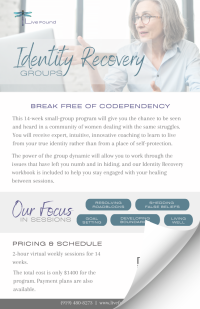The Pain of Betrayal and Rejection
The betrayal of abuse by the one who promised to honor and cherish you is a grief that leaves you feeling as though a knife has been stabbed into your heart. This profound wound disrupts our core need for trust, often triggering shame and self-doubt that linger like an unwelcome guest. Being forsaken by friends, family, and your church as they stood with your betrayer is like having that knife twisted even deeper into your heart. This secondary rejection activates neural pathways akin to physical pain, amplifying feelings of isolation and abandonment. Yet, within this pain lies the potential for healing through emotionally honest practices that restore your sense of self.
Finding Solace in God’s Presence
The only comfort I found as I faced these rejections was in pouring my heart out to God and telling Him exactly how I felt. In His presence, I found the validation that I needed and the ability to be confident in the truth that no one else saw or believed—because He “had seen everything.” This act of raw expression aligns with what counselor Adam Young shares: “Becoming clear about what you’re feeling is healing for the brain, and this is doubly true when you take the next step of pouring out the feeling in prayer.” Young’s insight, grounded in neuroscience, suggests that naming emotions reduces mental chaos, helping you process trauma. To make this practical, try journaling your feelings before prayer, using prompts like “What hurts most today?” or “What truth do I need to hear?” This externalizes pain, making it less overwhelming.
Learning from David’s Example
David poured his heart out to God repeatedly. He understood betrayal at the deepest levels. He also knew God as his most excellent companion, comforter, redeemer, rescuer, and restorer of his soul. In the Psalms, David’s honesty about his anguish models emotional authenticity, a key principle to address anxiety or depression. Expressing pain to a safe listener—whether God, a therapist, or a trusted friend—builds resilience. You might start by speaking or writing one honest sentence about your hurt each day, gradually deepening your emotional awareness.
Embracing God’s Truth and Love
As I poured my heart out to God, He spoke His love and truth, my faith and closeness to God increased. I began to cling to what He thought of me and nobody else. This shift reflects the psychological concept of self-differentiation, where you anchor your identity in internal or spiritual affirmation rather than external opinions. This fosters emotional health, freeing you from others’ judgments. Practically, reinforce this by setting boundaries with those who’ve hurt you—limiting contact or avoiding triggering conversations—to protect your healing space.
The Gift of Freedom
This was a gift of freedom I didn’t know I needed and it became the sweetest blessing. I was liberated from the control of what others thought of me, and I learned to live freely and authentically with God.
God’s Unfailing Presence
When others fail you, knowing God becomes even sweeter. He sees you—every tear and unspoken ache. He is for you, a constant presence when others falter. To deepen this connection, try meditative prayer: spend a few minutes daily focusing on God’s presence, repeating, “You see me, and I am enough.” This practice, blending spiritual tradition with mindfulness techniques, calms your nervous system and builds unshakable security.
A Promise of Restoration
Friend, He sees you. He is for you. Even when all others fail, He will not. You can pour your heart out to Him. In Him, you can find the safety and security you desire. As Psalm 27:10-11 declares, “For my father and my mother have forsaken me, but the Lord will take me in. Teach me your way, O Lord, and lead me on a level path because of my enemies.” This promise is your lifeline, guiding you toward restoration through God’s unwavering love.
We would love to help you step toward that restoration! Check out my gallery page to see how you can have a free 15-minute consultation for new clients! Or, dive right in and schedule a session with the button below.



